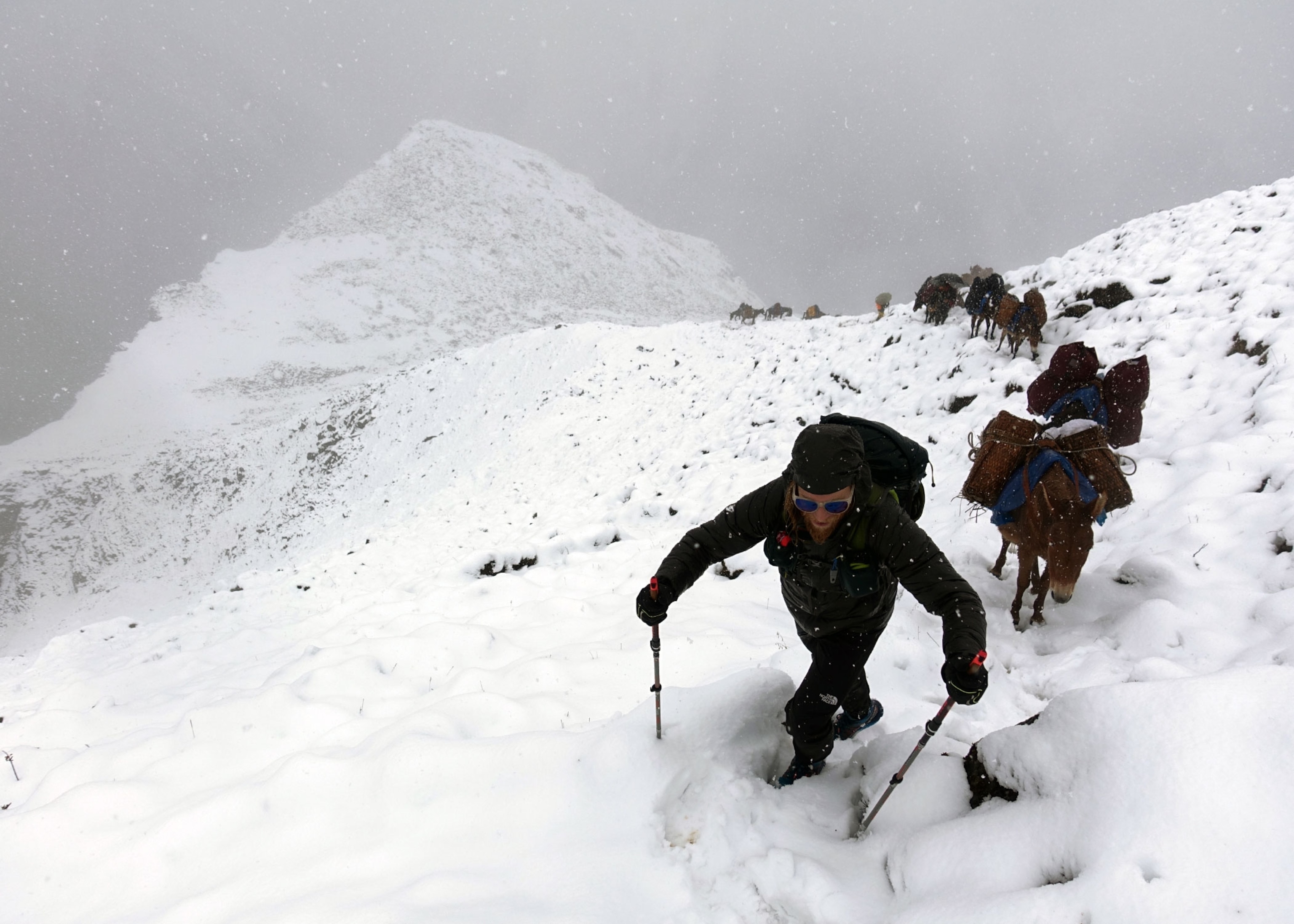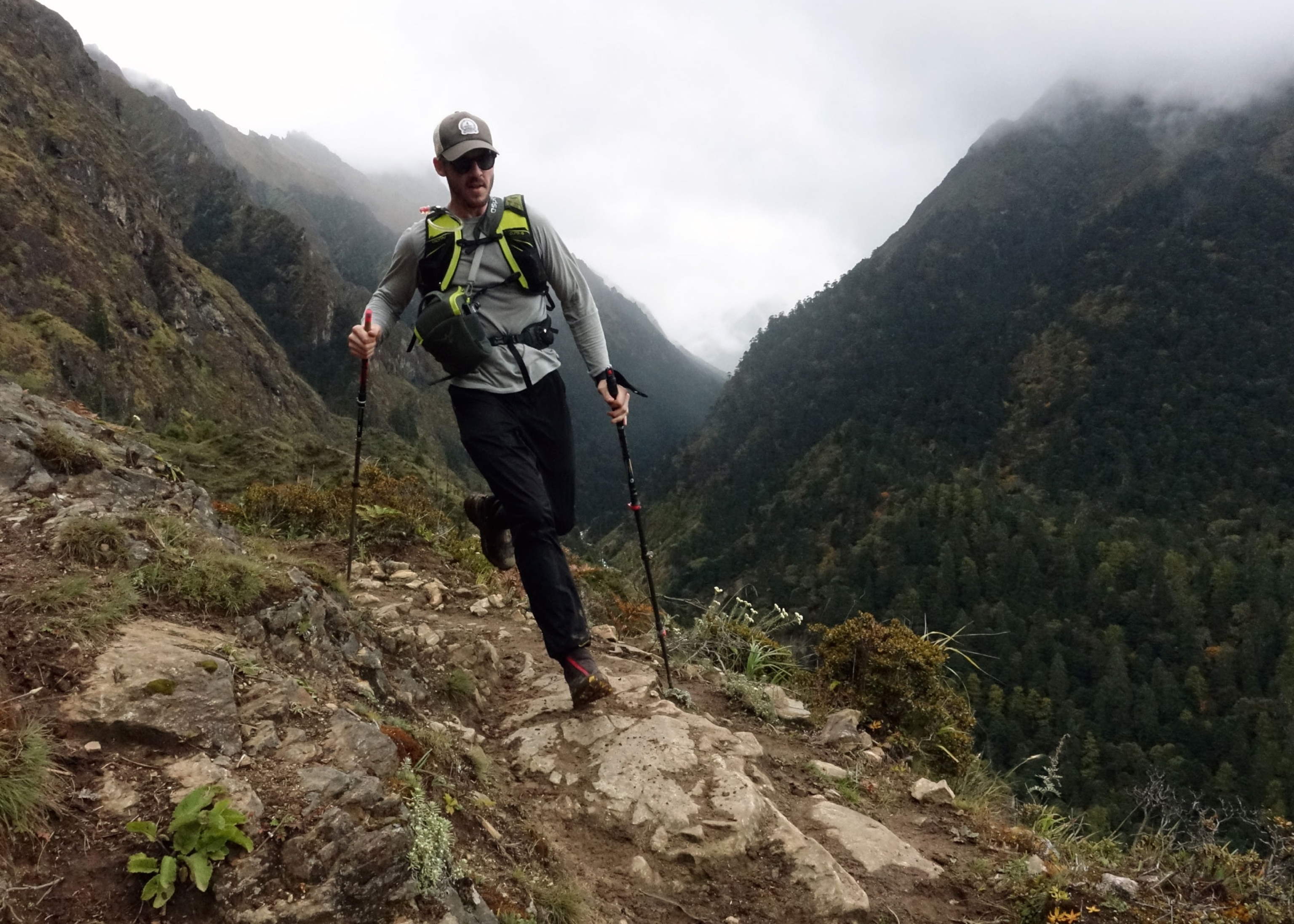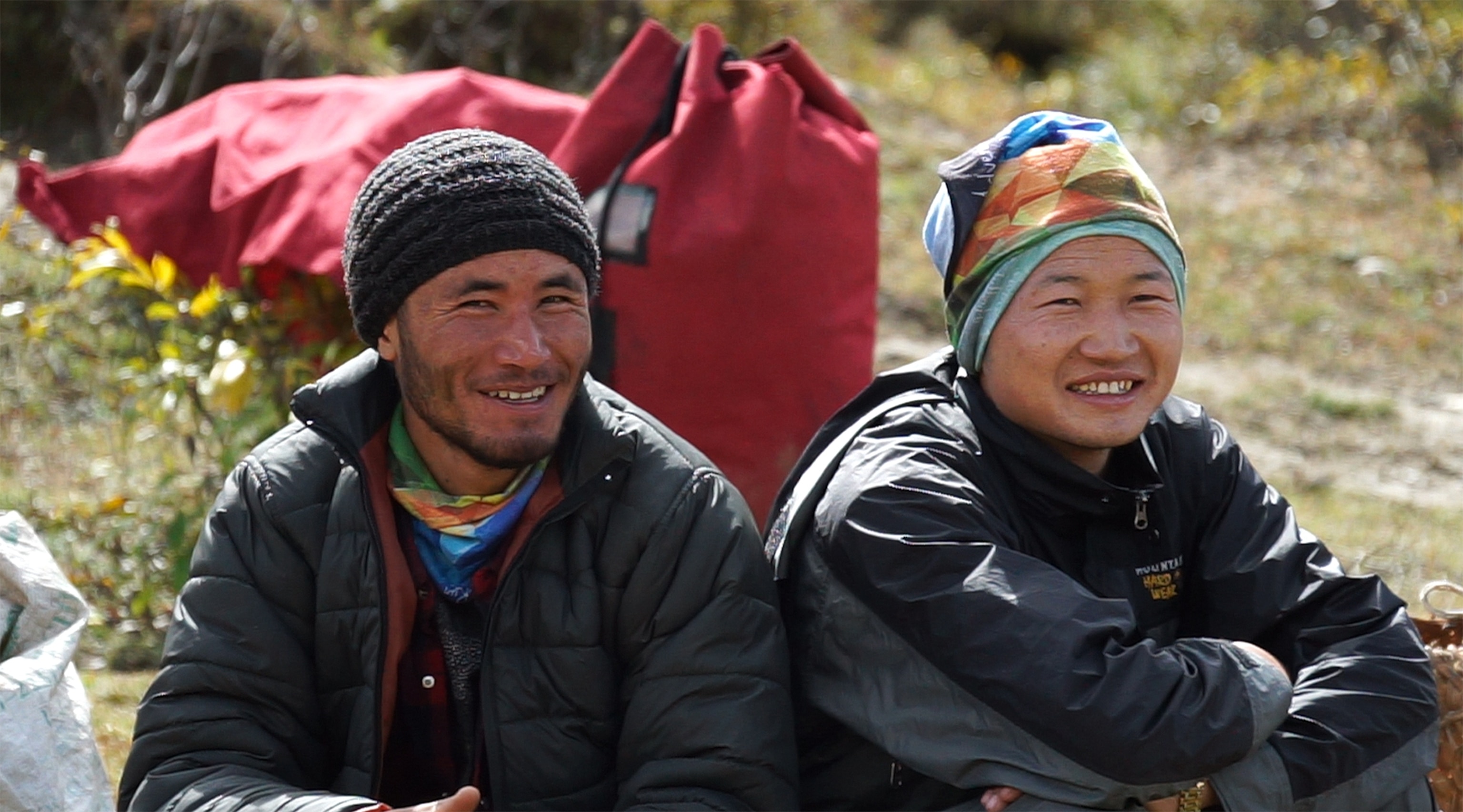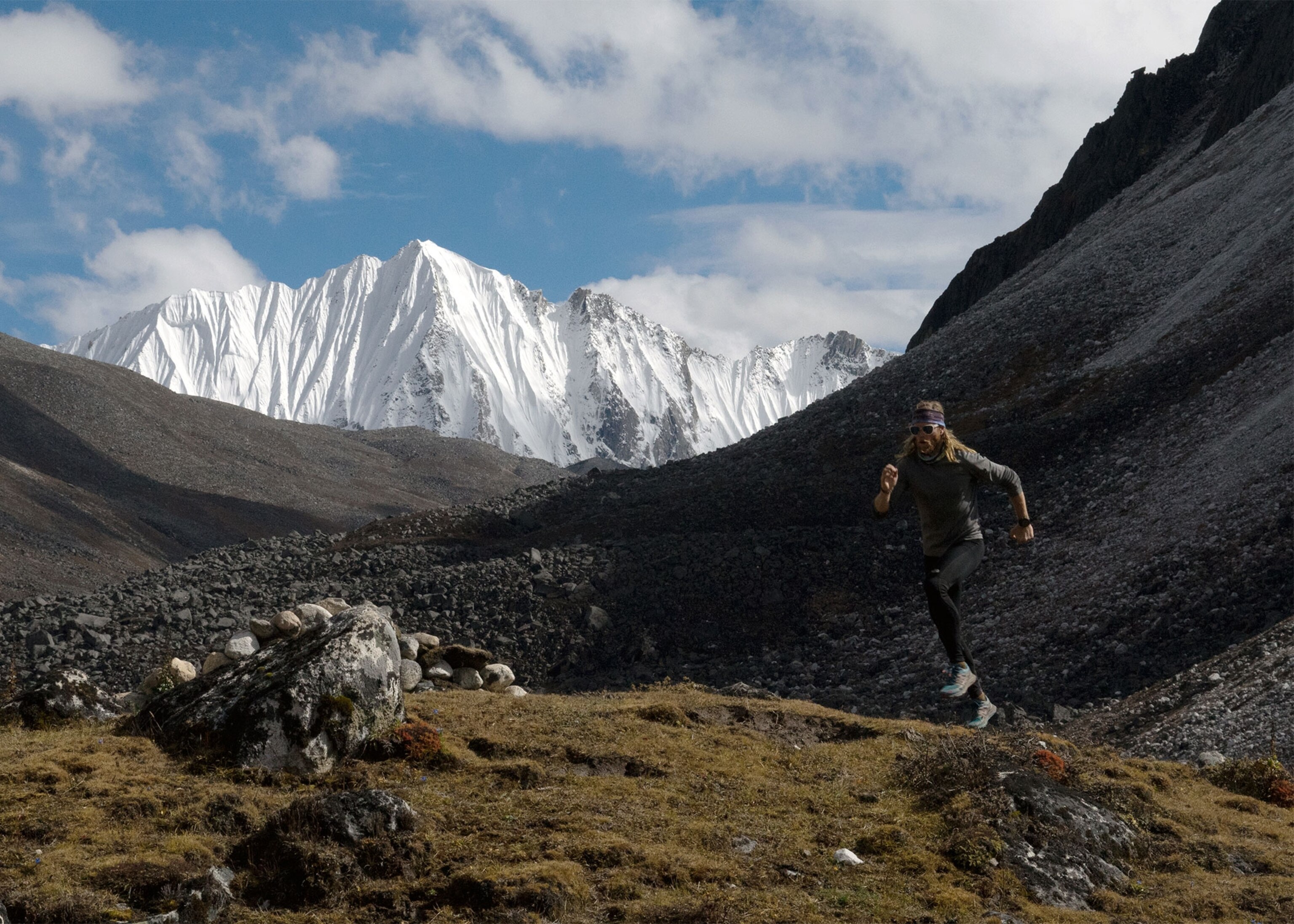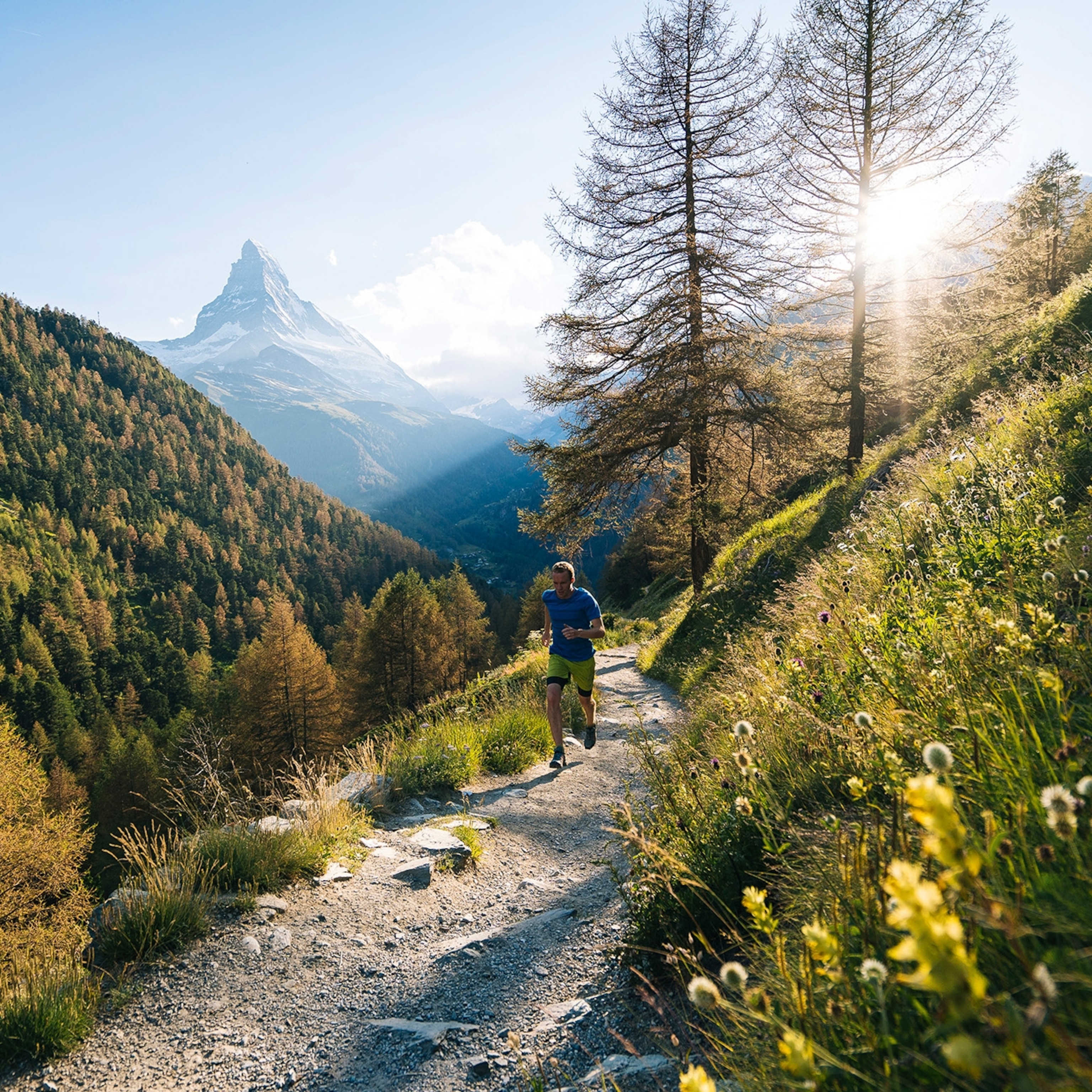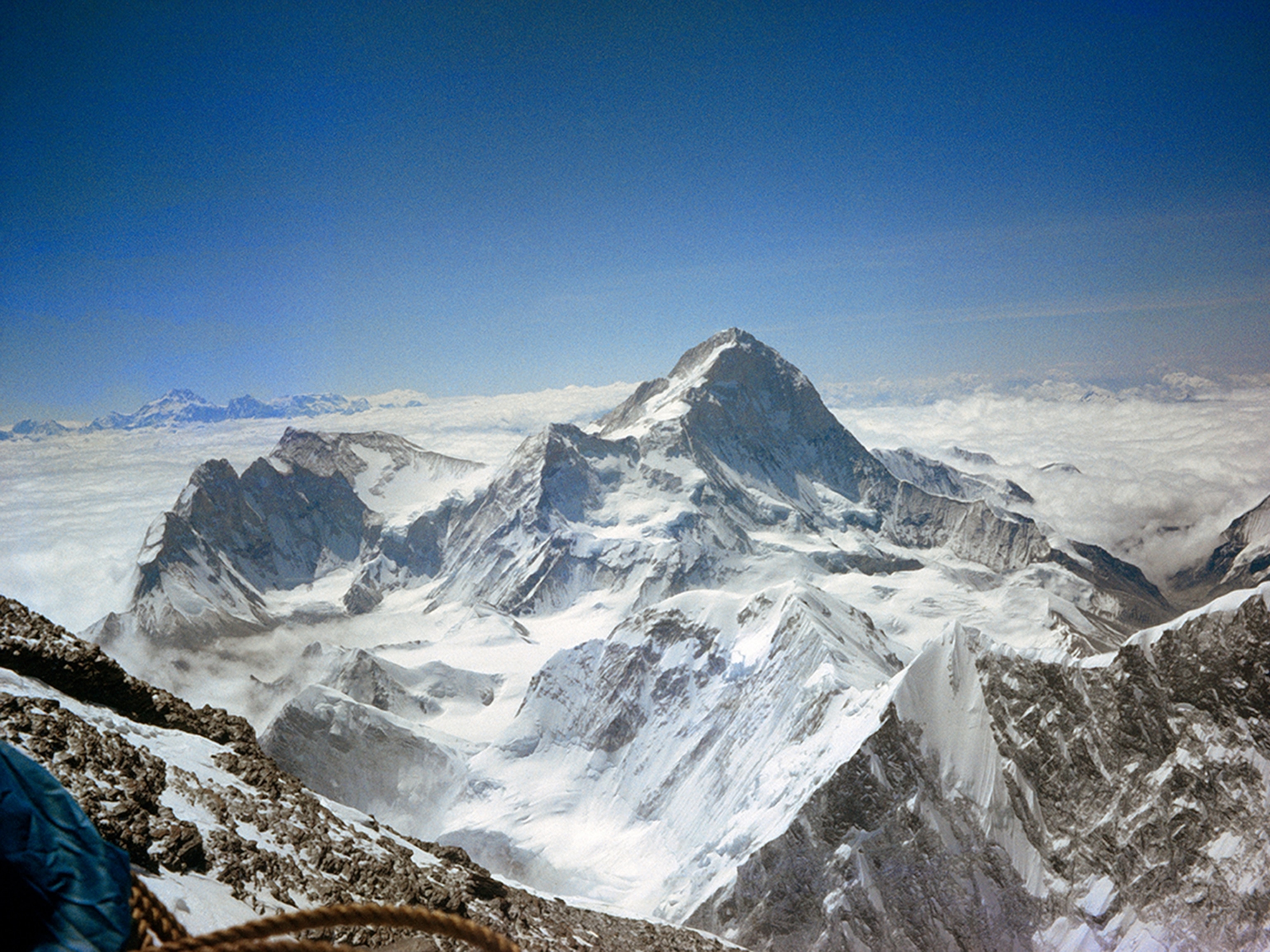Chasing a Speed Record on One of the World’s Highest, Hardest Treks
How a group of ultrarunners and Bhutanese guides persevered—through raging storms, dizzying altitude, and health perils—to make history on the world's toughest trek.
On September 30, 2016, two days into a record attempt on Bhutan’s 186-mile Snowman Trek, 41-year-old Australian Chris Ord was feeling off. By the fourth day he was leaning on his hiking poles every few steps. Then he began throwing up blood. The route, which is widely considered one of the toughest hiking trails in the world to complete, is a high-altitude affair, and Ord, an experienced trail and mountain runner, was feeling the effects of high-altitude pulmonary edema, or HAPE, a life-threatening condition that can overcome otherwise physically fit athletes who gain altitude too quickly.
Ord, the editor of Australia’s Trail Run magazine, had been hired as a cameraman by the expedition’s leader, veteran Himalaya alpinist and filmmaker Ben Clark, 37. The goal was to run with and film Clark’s vision, an attempt to set a new fastest known time, or FKT, on the remote Himalayan trail. The team also included professional ultrarunners Anna Frost, 34, and Tim Olson, 33. Ord had run half of the trail the previous November while guiding clients with Frost, but things felt different this time.
After a day that covered 16 miles and a 4,500-foot ascent, Ord arrived at camp stumbling like a drunkard, wheezing like an asthmatic, and white as a ghost. The recommended treatment for HAPE is to descend to lower altitudes immediately, but the earliest an emergency evacuation could get there was the next morning. Frost, who’s from New Zealand but lives in Durango, Colorado, spent the night of October 2 awake in their shared tent, counting her friend’s breaths. “I was watching for his chest to move to make sure he was still alive,” said Frost. “It was the scariest night of my life.” The next morning the group solemnly watched as their friend was flown off in a helicopter.
One of the World’s Highest, Hardest Treks
Bhutan is a small, mostly agrarian country—about half the size of Ireland—located below Tibet on the southern slopes of the eastern Himalaya mountains. Until recently it’s been one of the most remote and undeveloped countries in the world, with roads, electricity, and hospitals hard to come by. The crescent-shaped trail on the northern border of Bhutan starts in Paro, ends in Bumthang, and traverses approximately 48,000 feet uphill through rugged terrain, shadowed by massive peaks. The trek crosses 11 high mountain passes over 16,000 feet, with four of those higher than 17,000 feet. “Basically the Snowman Trek is their highway, how they get supplies to different places,” said Olson, from his home in Boulder, Colorado.
Bhutan has a constitutional requirement to protect the country’s environment. To promote tourism and cultural immersion they have a strict mandate that foreigners must use local guides when traveling on their trails. When Bhutanese guides speak of the Snowman Trek they tell you about the 50 percent failure rate. “They want you to slow down and participate in the culture,” said Clark. This ran counter to the explicit goals of their team—the group had planned on completing the trail in no more than 14 days. “We had heard [the FKT] was 19 days, but village after village told us no one could do that. It usually takes about 27 days and that’s only if people hit it in the season correctly and the [mountain] passes are open,” said Clark.
Prior to departure, the senior guides heard how fast the group wanted to move, and they all left in protest. “They thought it was impossible,” said Clark. The contracted guiding agency, International Treks & Tours Pvt. Ltd., then set the group up with a party including 33-year-old guide Wang Chuk, five cook staff, two horse attendants, and 21 horses—none of whom knew the route or had even done the entire trail. “I heard that all my guide friends at the agency to whom the managers approached rejected the offer,” said Chuk by email. “I thought it is a chance I should take with a fear in my mind.” With their group swelling to 11 people total, their planned 14 days were extended to 18.
The athletes pressed on under the presumption they could talk the guide group into moving faster. The night before Ord’s emergency, Clark and Ord had pled with the guide group to let them attempt more miles each day. “Here I am trying to convince them we’re not going fast enough,” said Clark. “And the very next day Ord got acute mountain sickness and pulmonary edema and was helicoptered out.”
In the Lair of the Thunder Dragon
Sad to see Ord leave, the group still pressed on even as weather conditions worsened (the word Bhutan actually translates to “land of the thunder dragon,” a moniker earned because of the fierce thunderstorms it often receives). “We were rained on, snowed on, and dumped on for 11 or 10 days straight,” said Olson. “The mountains were blurry little objects and we just weren’t going far each day.” The rain and frequent use of horses on the trail created what Olson began calling a “s--- creek,” and in some sections he wasn’t sure if he was running through a waterfall or on a trail. “We just had to accept it; you are running, falling, and swimming in s---,” he said.
Village to village, mile by mile, the guide group started to become emboldened by the fact that they were going to make Bhutanese history the hard way. On October 11 the route took them over two mountain passes above 16,000 feet in elevation. “That day was a committing one. We almost got way off track because our senior horseman couldn’t find the critical route up the last pass—it was covered in snow,” said Clark. When the team stopped to find the route Frost began shaking uncontrollably; her lips turned blue as she tried to fend off hypothermia. The athletes found the pass and with two cook staff sped ahead with dwindling light and finished the 6,000-foot-uphill day soaked, cold, and hours before the crew would arrive with supplies and warmth. “It felt less like a trek that day and more like mountaineering. It was clear we had really, really pushed the locals to a new limit.”
Zombie walking into camp without headlamps, the crew arrived around 1 a.m. The day on the trail, which stretched to 13 hours, was the longest, hardest day of hiking any of them had ever experienced. This was also their 13th straight day without recovery, so the next morning, the crew simply refused to continue—they needed a rest day.
“There was no chance they were moving that day, but on the final day we convinced them to do their own thing,” said Olson. “And it was a nice 40-kilometer [25-mile] hike for us.” For the guide group, however, this day was once again upping the ante, and the 25 miles, with 2,600 feet of uphill and 8,200 feet of downhill, would take them 14 hours to finish. “It was a very, very good experience for me; it made me more strong mentally,” said Chuk. “And gave me a really joyful satisfaction.”
Olson and Frost, carrying lighter packs, got out ahead of the others and finished with a new FKT of 15 days and seven hours. Clark finished with the Bhutanese two hours later “to honor the support and hard work they put in,” in the group’s official time of 15 days and nine hours.
- National Geographic Expeditions
“I call it majestic chaos, beautiful, and messy.” said Olson. “Logistically it was a s----show, but it’s a great story.”
Ord’s Ordeal
Ord, too, has quite a story. With fluid gurgling up his trachea and into his throat, he took a harrowing helicopter flight to the Paro hospital. There doctors ran a barrage of tests on him. He was then sped off for a bumpy ambulance ride, sirens blazing, to the better-equipped facility in Thimphu. “I thought at the time it was all a bit over the top, thinking that given I was back down at a reasonable altitude, I could just head to the hotel and recuperate for a few days,” said Ord over email. “But the doctors were worried.”
This is because his blood oxygen levels were at 67 percent and not improving even though he had moved to lower altitude. Thinking he may have also been developing pneumonia, they pumped him full of antibiotics. This caused four terrible days of diarrhea, the likes of which the well-traveled Ord had never experienced. “This was worse than any of what had just transpired up high,” said Ord. “I lost so much weight in four days that I became skeletal and just as scared, if not more so, than when I was on the mountain.” He eventually spoke to a doctor back home in Australia, who advised him to try coming off all the antibiotics. Within eight hours he had improved to the point that it was safe to fly home. A month later, he had returned to trail running, mountain biking, and working with no lingering effects.
Getting off the trail when he did saved Ord’s life. “The doctors said the next [mountain] pass—and we were due to go over two more passes approaching 5,000 meters in the next two days—would have killed me.”
